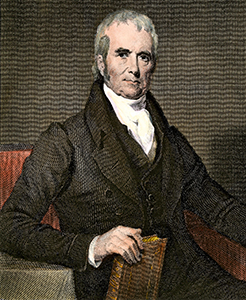High School Chapter 2:
Acts of Resistance: A Fight for Freedom and Equality
Introduction
Before the 13th Amendment officially ended slavery in the United States, free and enslaved African Americans fought for their liberty, society’s recognition of their humanity, and the promise of equality. A variety of methods were used by enslaved African Americans to resist the conditions they experienced while in bondage. In this lesson plan, students will learn about three individuals whose actions are a representation of the bravery of African Americans who fought for their freedom and equality.
Standards
Virginia
- VUS.6 The student will apply social science skills to understand major events in Virginia and United States history during the first half of the nineteenth century by:
- e) evaluating the cultural, economic, and political issues that divided the nation, including tariffs, slavery, the abolitionist and women’s suffrage movements, and the role of the states in the Union
National
- NSS-USH.5-12.4 Era 4: Expansion and Reform (1801-1861)
Key Hook/Question
How did African Americans resist enslavement and fight for their freedom and equality?
Downloads
The slideshow below can be used in this browser-based format, or downloaded as a presentation or PDF outline. You may also use the button below to make a Google Slides copy in order to adapt or edit the presentation.
Adaptations & Suggestions
All of our lesson plans are designed to be adaptable to your needs. After downloading a copy of these Google Slides, feel free to rearrange their order, pick and choose elements that work best for your students, or add to the content to supplement an area to which you’d like to add extra emphasis.
Additionally, our activities can be uploaded to any platform (such as Google Classroom) and shared with students directly so that they can complete the plans individually on their own devices. You can also project the lesson plan and have students look on as an entire class as you lead them through it.
- This lesson can be broken into chunks for small group work, and then students can gather afterwards for a large class discussions. For example: students can work through slides 9-12 individually, and then regroup to discuss before the entire class completes slide 10 as a formative assessment.
- Students could be placed in small groups to work through individual slides such as 10, 12, 15, 17, 20, and 22 to examine the primary sources.
- Small groups of students could also focus on one story (such as slides 9-13) and present their findings to the class.
- If time and the number of students allow, this activity could be completed as a “level up challenge”. Students individually or in pairs complete a level challenge and then have teachers check their answers checked before progressing to the next level. Prizes or rewards could be given for completing each level.
- Teachers can upload individual levels to their student platforms one by one, waiting to then load subsequent levels as the class progresses through the activity so that students stay focused on the current section.
- For teachers with time constraints, use a single story from this presentation rather than all three. For example, if you are covering SOL content related to the Fugitive Slave act and sectional tensions, use Anthony Burns’s story to connect to the curriculum.
- SOL-based suggestions:
- This lesson could be introduced with key terms found from the SOL 6e, including Nat Turner, Gabriel Prosser, William Lloyd Garrison, and the Underground railroad. This discussion could also be used as a review if these terms were previously taught.
- Teachers can highlight and review key vocabulary terms and concepts that are important for the SOL. For example: you could discuss throughout the activity Jamestown 1619, Nat Turner, Gabriel Prosser, William Lloyd Garrison, the Underground railroad, sectional tensions, Fugitive Slave Act, Uncle Tom’s Cabin, Dred Scott decision, the abolitionist movement
- This lesson could be introduced with a specific conversation on resistance and what that term means. Slide 6 (and others) could be taken out and formatted to create a “gallery walk” discussion, where you print out the images and place them on your walls to allow students to walk around and make observations about what they see.





